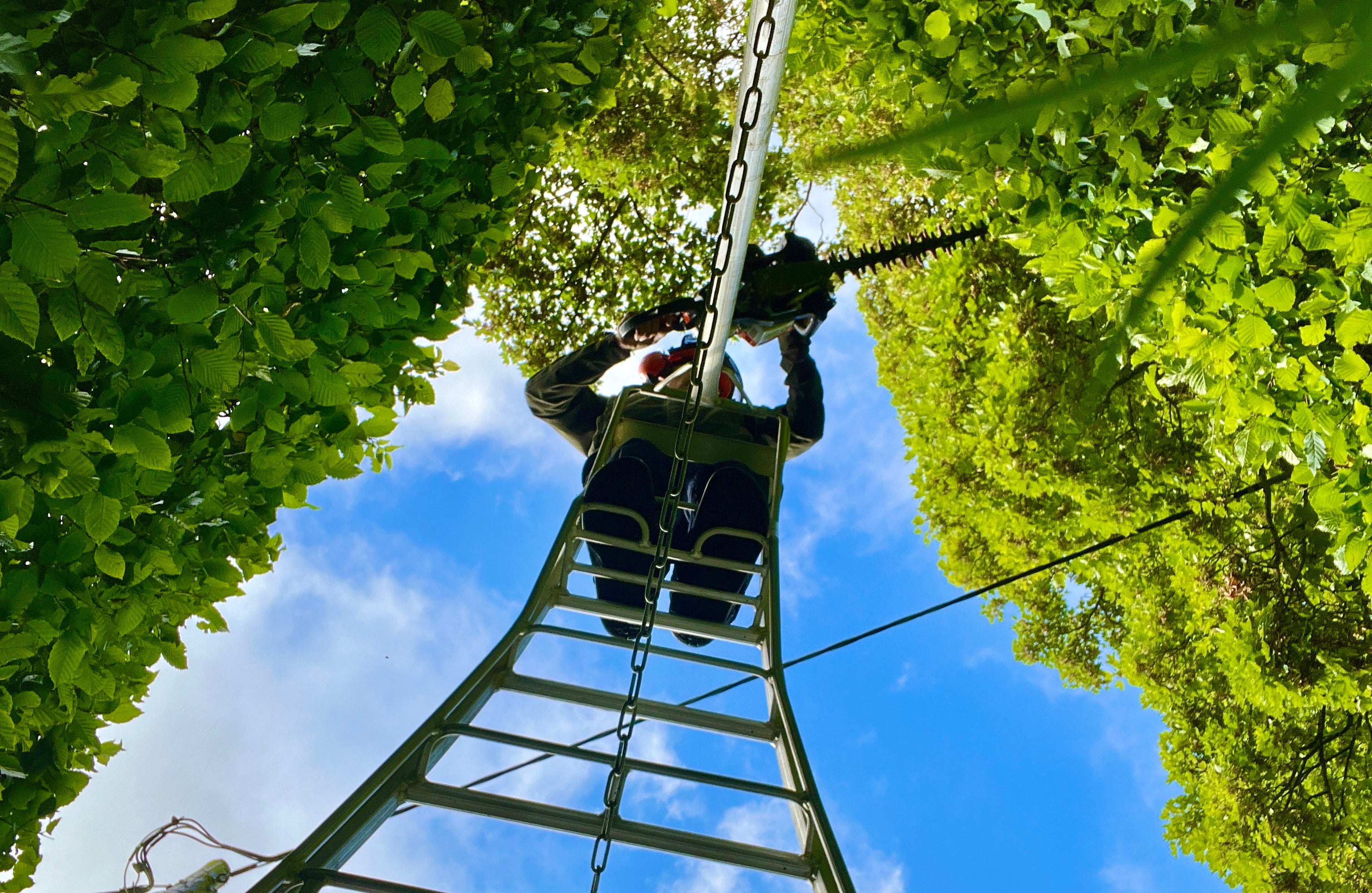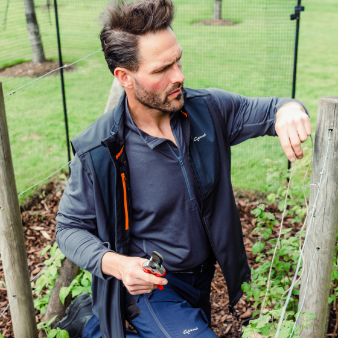Hedging History

With misty mornings and mellow fruitfulness pervading the garden, autumn has announced its arrival in the Cotswolds. The dank, almost imperceptible, smells of plant life slowly breaking down and silky airborne webs carrying their occupants to pastures new, remind us that the ever-turning cycles of nature are unstoppable.
In a similar vein, we set to the familiar seasonal tasks here at Genus HQ as we have done for the last dozen years. This week the hornbeam hedge that flanks the lane was given its final cut for the year; our tall tripod ladder (pictured) the perfect piece of equipment to carry out the job quickly and more importantly safely.
Hornbeam, a native to the south of the country is a very appropriate hedging plant for us to use; with Cirencester, the second largest town during the Roman occupation just down the road, it’s interesting to discover that hornbeam was a favourite material for the construction of horse drawn chariots. Over the centuries hornbeam, the hardest wood in Europe, was made into yokes for teams of oxen as well as furniture, wooden screws, butchers blocks, and coach wheels. Restricted primarily these days to hedging and pleaching, it’s fascinating to realise the importance this tree played in day to day life in centuries gone by.







